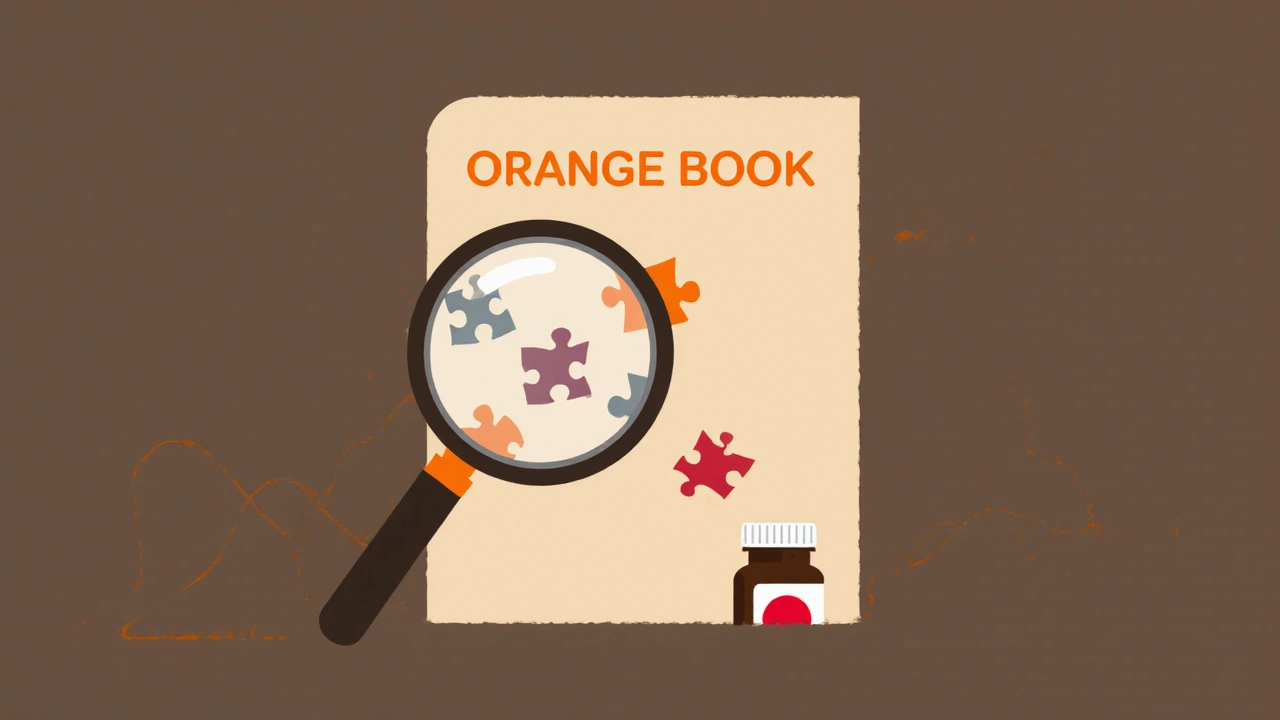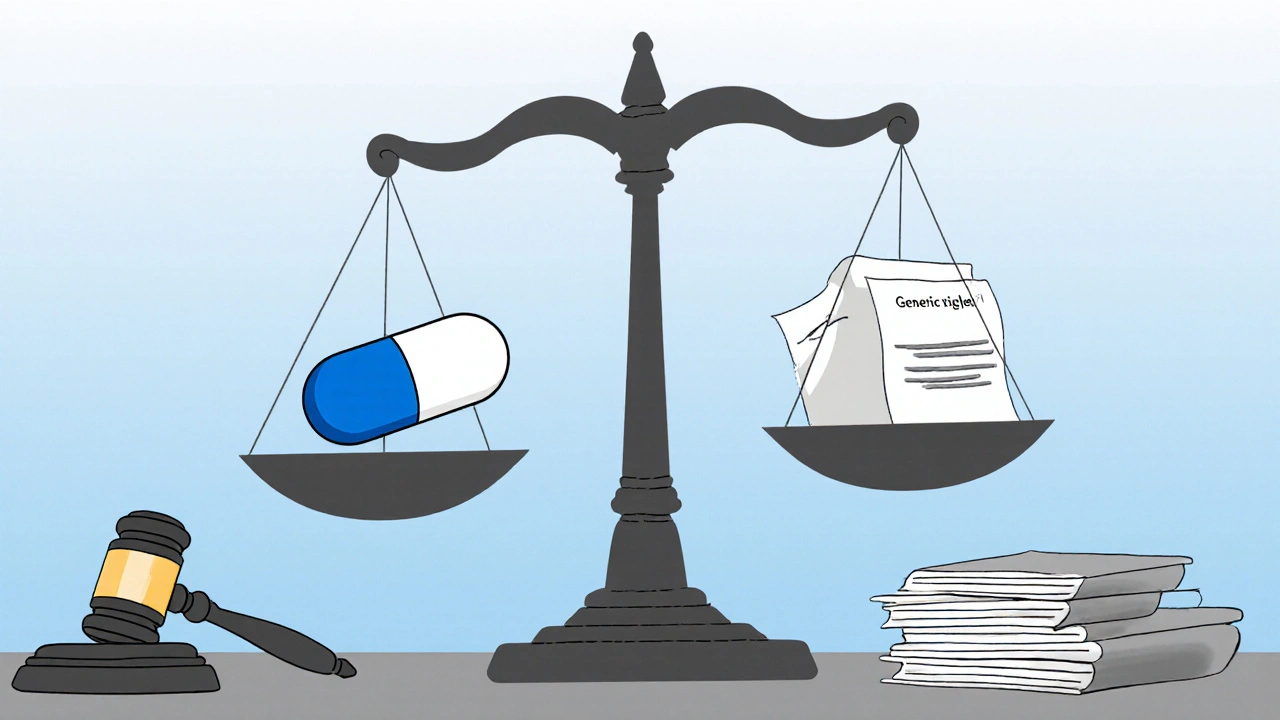When you walk into a pharmacy and pick up a generic version of your prescription, you’re not just saving money-you’re benefiting from a decades-long legal battle fought in courtrooms across the U.S. The fight between brand-name drug makers and generic manufacturers isn’t just about profits. It’s about access, affordability, and the very meaning of a patent. And at the center of it all are a handful of landmark court decisions that changed how drugs reach patients-and how much they cost.
How Generic Drugs Got Their Legal Footing
The foundation for today’s generic drug market wasn’t laid by a drug company. It was written into law in 1984: the Hatch-Waxman Act. Named after Senators Orrin Hatch and Henry Waxman, this law was designed to fix a broken system. Before it, brand-name companies could hold patents for years, blocking any competition-even after their original patent expired. Generic makers couldn’t even start testing their versions until the patent was gone. That meant patients waited years longer than necessary for cheaper alternatives.
Hatch-Waxman changed that. It let generic companies file an ANDA-Abbreviated New Drug Application-without repeating all the expensive clinical trials the brand company did. But there was a catch: they had to certify whether the brand’s patents were valid or being infringed. If they said the patent was invalid or wouldn’t be infringed (a Paragraph IV certification), the brand company could sue. And that’s where the courts stepped in.
Today, 85% of U.S. prescriptions are filled with generics. That’s not luck. It’s the result of legal rules that force brands to prove their patents are real-and not just legal tricks to delay competition.
Amgen v. Sanofi: The End of Overly Broad Biologic Patents
In 2023, the Supreme Court handed down a decision that sent shockwaves through the biotech industry: Amgen v. Sanofi. Amgen held a patent on a class of cholesterol-lowering drugs, claiming it covered ‘potentially millions’ of antibodies. But it only showed how to make 26 of them. Sanofi, a generic maker, argued that the patent was too vague-it didn’t teach others how to make the rest.
The Court agreed. In a rare unanimous ruling, they said a patent can’t claim something you haven’t actually invented. If you can’t show enough detail for someone else to reproduce it, your patent is invalid. This wasn’t just about cholesterol drugs. It hit biologics-complex, protein-based medicines like cancer treatments and autoimmune therapies-hard.
Before this ruling, companies could file broad patents covering entire families of molecules, even if they’d only made a few. That kept generics out for years. Now, the bar is higher. Generic makers say this is a win. Teva’s legal team told investors the decision reduced uncertainty-but also raised costs. Preparing an ANDA now requires deeper scientific analysis. Each generic application can cost $1.2 million more than before.
But brand companies warn it’s a danger. Former USPTO Director Andrei Iancu said this could slow innovation in next-generation antibody drugs. If you can’t patent a whole class of molecules, why invest millions to develop them?

Allergan v. Teva: Protecting the First-to-File Advantage
Not every ruling helped generics. In 2024, the Federal Circuit decided Allergan v. Teva, and this time, the brand won. Allergan had a patent on a nasal spray that expired in 2025. Teva filed its ANDA and challenged the patent. But Allergan had another patent-filed later, but set to expire later too. Teva argued that since the first patent was weaker, it shouldn’t block entry.
The court said no. The law doesn’t let a generic challenger pick and choose which patent to fight. If a brand lists any patent in the Orange Book, the generic must challenge it head-on. Even if another patent is newer or stronger, the first one still counts. This decision gave brand companies a new tool: file multiple patents, stagger their expiration dates, and keep generics waiting.
Now, companies are filing patents on packaging, dosing schedules, even manufacturing methods-not because they’re novel, but because they can extend market exclusivity. Seventy-two percent of patent attorneys surveyed by the Federal Circuit Bar Association believe this ruling will lead to more patent manipulation. It’s not illegal. But it’s not what Hatch-Waxman was meant to do.
Amarin v. Hikma: The Hidden Trap in Generic Labeling
Here’s a twist you might not expect: a generic drug can be sued for infringement-even if it doesn’t copy the brand’s drug. In Amarin v. Hikma, Amarin made a heart drug approved only for one use: reducing triglycerides in very high-risk patients. Hikma made a generic version and labeled it exactly as the FDA approved-only for that one use.
But Hikma’s marketing materials hinted doctors could use it for other conditions. Amarin sued, claiming this was ‘induced infringement.’ The court agreed. Even though Hikma’s label was legal, their sales reps were suggesting off-label uses. That’s enough to trigger liability.
This case changed everything. Now, generic companies don’t just need to get the label right-they need to police every ad, website, and sales pitch. In 2023, 63% of induced infringement claims by brand companies succeeded. That’s not a fluke. It’s a strategy. And it’s working.
Patients notice this. One Reddit user, ‘MedSavings43,’ wrote: ‘My insulin alternative was delayed 22 months due to patent litigation-cost me $8,400 out-of-pocket.’ That’s not just a personal loss. It’s systemic. When generics can’t enter, prices stay high. And the courts are letting that happen.

The Orange Book: The Secret Database That Controls Access
Behind every patent fight is a database most people never hear of: the Orange Book. Published by the FDA, it lists every drug approved in the U.S. and every patent tied to it. If a brand doesn’t list a patent here, generics can ignore it. But if they list one-even if it’s weak or unrelated-they trigger a 30-month legal hold.
That’s why the Orange Book is battleground #1. In 2024, the FDA proposed new rules to stop ‘evergreening’-the practice of listing patents that have nothing to do with the drug’s actual chemistry. For example, a patent on the color of a pill, or the shape of the bottle. These don’t protect innovation. They protect profits.
But the system is still broken. A 2024 survey by BioPharmaceuticals Today gave the Orange Book guidelines just 3.2 out of 5 stars. Generic manufacturers say it’s confusing. Brand companies say it’s too easy to challenge. And courts keep having to sort out the mess.
What’s Next? The Future of Generic Drug Access
The legal landscape keeps shifting. The Supreme Court denied Amgen’s request for a rehearing in October 2024, making its decision final. The FDA’s new transparency rules could come in 2025. Meanwhile, biosimilars-generic versions of biologic drugs-are exploding. In 2024, they made up 27% of patent challenges. By 2027, that could jump to 31%.
But the cost of litigation is climbing. The average Hatch-Waxman case costs $6.8 million to get to summary judgment. Small generic makers can’t afford it. Only 87% of the top 100 generic companies now have full-time patent litigation teams. The rest? They sit on the sidelines.
And patients pay the price. Evaluate Pharma projects that unresolved patent disputes will delay $127 billion in generic drug sales through 2026. Cardiovascular and cancer drugs are hit hardest. These aren’t luxury medicines. They’re life-saving.
The system was built to balance innovation and access. But today, it’s tilted. Courts are making smarter rulings-like Amgen v. Sanofi. But loopholes remain. Labeling tricks. Patent stacking. Orange Book games. Until those are fixed, generics will keep fighting in court… while patients wait.
What is the Hatch-Waxman Act and why does it matter for generic drugs?
The Hatch-Waxman Act of 1984 created the legal pathway for generic drugs to enter the market without repeating expensive clinical trials. It lets generic manufacturers file an ANDA and challenge existing patents through Paragraph IV certification. In return, the first generic to challenge a patent gets 180 days of exclusivity. This law is the reason 85% of U.S. prescriptions are now filled with generics-it balances innovation with affordability.
What is the Orange Book and how does it affect generic drug approval?
The Orange Book is the FDA’s official list of approved drugs and their associated patents. If a brand-name company lists a patent here, a generic manufacturer must either wait until it expires or challenge it legally. Listing a patent triggers a 30-month automatic stay on generic approval, even if the patent is weak. This makes the Orange Book a key tool in delaying generic entry-sometimes for years.
How do inter partes reviews (IPRs) impact generic drug litigation?
Inter partes reviews (IPRs) are fast-track patent challenges handled by the Patent Trial and Appeal Board (PTAB). Since 2011, 78.3% of generic drug patent challenges have used IPRs because they’re faster and cheaper than district court lawsuits. IPRs have helped invalidate weak patents, speeding up generic entry. But they’re not foolproof-brand companies can still sue in court afterward, and the process adds complexity.
Why do some generic drugs take years to become available after a patent expires?
Even after a patent expires, generics can be blocked by legal delays. Brand companies often file multiple patents on minor changes-like dosage form or packaging-and list them in the Orange Book. Each one can trigger a 30-month stay. Courts may also side with brands on issues like induced infringement or enablement. The median litigation duration is nearly 29 months. That means generics often wait years longer than the patent term to enter the market.
Can a generic drug company be sued for infringement even if their product is identical?
Yes. In Amarin v. Hikma, the court ruled that even if a generic’s label is approved by the FDA, marketing materials that suggest off-label uses can count as induced infringement. This means generics must not only match the drug exactly-they must also control how their product is promoted. This has led to stricter compliance protocols and increased legal risk for generic manufacturers.


Comments (14)